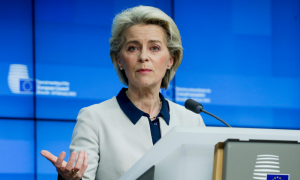CPEC termed model of collaboration, partnership, connectivity and shared prosperity

Gwadar Pro
Lahore: Pakistan-China Joint Chambers of Commerce and Industry (PCJCCI) President Moazzam Ghurki have labeled China-Pakistan Economic Corridor (CPEC) as a “model of collaboration, partnership, connectivity and shared prosperity” promising high levels of industrial and agriculture cooperation.
He maintained that the CPEC initiative was significant for Pakistan as it would lead to rapid economic growth of the country and also enhance regional security.
Chairing a meeting at the PCJCCI Secretariat here, hetalked about the significance of SEZs in enhancing business-to-business (B2B) collaboration, while the government was working to ensure smooth transition towards second phase of CPEC which will lead to socioeconomic uplift of marginalised areas.
He added that according to the World Bank’s Global Economic Prospects report, the global economy probably shrank by 4.3 per cent in 2020 due to the pandemic of Covid-19 and financial crisis.
He contended that the challenges for Pakistan are multiple as they struggle to eliminate poverty, bring economic growth due to hike in inflation rate.
He remarked that CPEC was now the principal vehicle for the pursuit of bilateral ties at renewed and heightened ebb of engagement.
On the occasion, PCJCCI Senior Vice President Fang Yulong said that China’s next transformation is well under way and a “New Economy” is emerging, all set to make global impact through innovations and economic initiatives leveraging its demographic and economic diversity.
He underlined that in order to accrue the benefits of this transformation, ‘Team CPEC’ has to now mobilize all resources for accomplishing the daunting task of timely implementation of CPEC projects in Pakistan, which would further lead towards a true inclusive growth.
“This time the focus of CPEC would be on populating the priority SEZs (Special Economic Zones) through industrial cooperation which is entering vital stage with immediate steps required to encourage private sector participation and creating enabling environment reducing risks and promoting complementary policies,” he said.
Hamza Khalid, Vice President PCJCCI, stressed that in the second phase of CPEC, the government is gearing up to lift marginalized areas of Pakistan and promising greater regional integration.
It was suggested that continuity of policies, productivity of labor, and cost of land and provision of utilities are the key bottlenecks which are being addressed through various initiatives of the government.
Salahuddin Hanif, Secretary General PCJCCI added that there were many challenges ahead and in the face of such challenges, “we will need to work together in partnership and across a range of fronts through a pragmatic joint action plan that will require hard work.”





